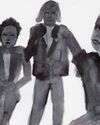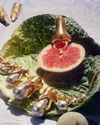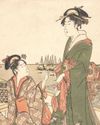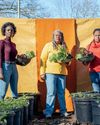Finding echoes of Japans ancient past, and of the enchanted woodlands of Hayao Miyazaki's animated masterpiece Princess Mononoke, deep among the trees of Yakushima island.

IN ORDER TO see one of the oldest living trees on earth in one of the oldest evergreen forests in the world, you must first fly two hours from Tokyo to the town of Kagoshima on Kyushu, which is the southern- and westernmost of Japan’s four major islands. From there, you board a little twin-propeller plane for another short flight south to Yakushima, which appears on maps as a near-perfect circle, the last piece of significant landmass before the Okinawa archipelago, another hour’s flight south.
If you haven’t visited Japan — and probably even if you have — you have likely never heard of Yakushima. The island, which has a population of just 13,100 and is less than 200 square miles (approx. 518 sq km), is distinguished by its curious ecosystem. The eastern side, where my friend and I landed, is semi-tropical: The road is edged with giant bromeliads and chusan palm and camellia bushes whose fallen petals paint the tarmac with fuchsia. The houses are built of sun-bleached painted wood and corrugated tin, much like the houses on the northern side of Oahu, in Hawaii, where I grew up, and there are dragon fruit trees, with their cacti-like, three-planed leaves and spiny pink fruits, and trees bearing two different kinds of oranges — the sour-sweet ponkan and the thick-skinned, meatier tankan — that, along with flying fish, are the island’s culinary specialty.
Denne historien er fra October 2018-utgaven av T Singapore: The New York Times Style Magazine.
Start din 7-dagers gratis prøveperiode på Magzter GOLD for å få tilgang til tusenvis av utvalgte premiumhistorier og 9000+ magasiner og aviser.
Allerede abonnent ? Logg på
Denne historien er fra October 2018-utgaven av T Singapore: The New York Times Style Magazine.
Start din 7-dagers gratis prøveperiode på Magzter GOLD for å få tilgang til tusenvis av utvalgte premiumhistorier og 9000+ magasiner og aviser.
Allerede abonnent? Logg på

Look At Us
As public memorials face a public reckoning, there’s still too little thought paid to how women are represented — as bodies and as selves.

Two New Jewellery Collections Find Their Inspiration In The Human Anatomy
Two new jewellery collections find their inspiration in the human anatomy.

She For She
We speak to three women in Singapore who are trying to improve the lives of women — and all other gender identities — through their work.
Over The Rainbow
How the bright colours and lively prints created by illustrator Donald Robertson brought the latest Weekend Max Mara Flutterflies capsule collection to life.

What Is Love?
The artist Hank Willis Thomas discusses his partnership with the Japanese fashion label Sacai and the idea of fashion in the context of the art world.

The Luxury Hotel For New Mums
Singapore’s first luxury confinement facility, Kai Suites, aims to provide much more than plush beds and 24-hour infant care: It wants to help mothers with their mental and emotional wellbeing as well.

Who Gets To Eat?
As recent food movements have focused on buying local or organic, a deeper and different conversation is happening among America’s food activists: one that demands not just better meals for everyone but a dismantling of the structures that have failed to nourish us all along.

Reimagining The Future Of Fashion
What do women want from their clothes and accessories, and does luxury still have a place in this post-pandemic era? The iconic designer Alber Elbaz thinks he has the answers with his new label, AZ Factory.

A Holiday At Home
Once seen as the less exciting alternative to an exotic destination holiday, the staycation takes on new importance.
All Dressed Up, Nowhere To Go
Chinese supermodel He Sui talks about the unseen pressures of being an international star, being a trailblazer for East Asian models in the fashion world, and why, at the end of the day, she is content with being known as just a regular girl from Wenzhou.